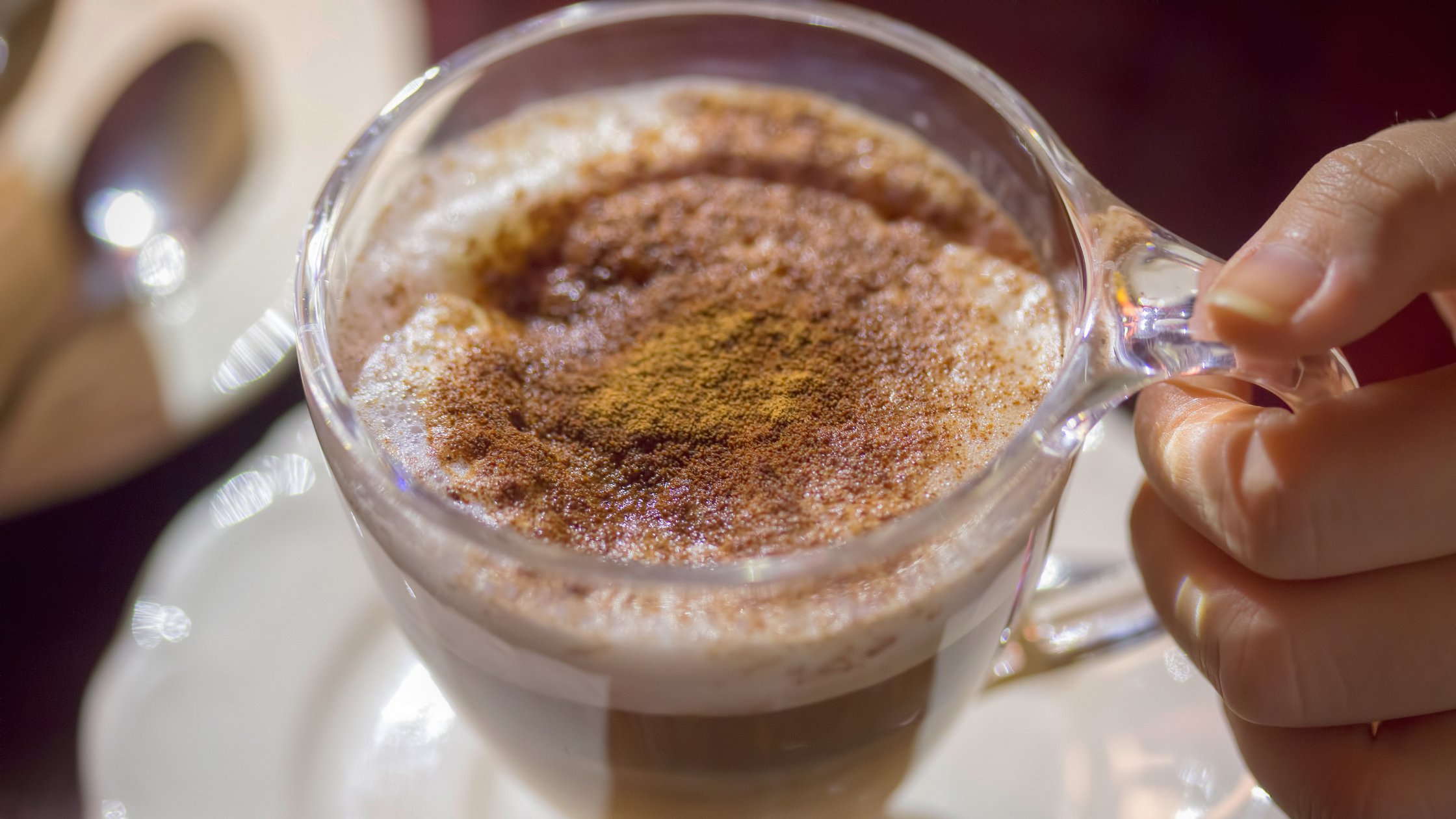Cappuccinos are a timeless coffee favorite, blending bold espresso with creamy steamed milk and a light foam topping.
Loved worldwide for its balance of flavors, this classic drink can be enjoyed in many different ways.
From traditional Italian versions to creative modern twists, there’s a cappuccino recipe for everyone.
Whether you prefer it simple or with a unique flavor infusion, these 16 cappuccino recipes will inspire your next cup of coffee!

16 Best Cappuccino Recipes: At A Glance
- Traditional Cappuccino
- Cappuccino Chiaro (Wet Cappuccino)
- Cappuccino Scuro (Dry Cappuccino)
- Iced Cappuccino
- Hazelnut Cappuccino
- French Vanilla Cappuccino
- Caramel Cappuccino
- Mocha Cappuccino
- Pumpkin Spice Cappuccino
- Oat Milk Cappuccino
- Almond Milk Cappuccino
- Soy Milk Cappuccino
- Lavender Cappuccino
- Coconut Cappuccino
- Spiced Cappuccino
- Honey Cappuccino
What Makes a Great Cappuccino?

The Basics of a Cappuccino
A classic cappuccino has three simple components: espresso, steamed milk, and foam.
Each element is used in equal parts, creating a balanced drink that’s rich and creamy with a strong coffee flavor.
The espresso provides a bold base, while the steamed milk adds smoothness, and the foam brings a light, airy texture on top.
This balance is key to making a cappuccino that is both flavorful and satisfying.
Key Ingredients
To make a great cappuccino, you need high-quality ingredients.
The coffee must be an espresso roast to deliver the intense flavor needed for this drink.
Espresso is a concentrated form of coffee, and its strength pairs perfectly with creamy milk.
Milk is the next essential ingredient.
Whole milk is preferred because its fat content creates the best foam.
If you’re looking for a non-dairy option, oat milk is a popular choice as it froths well and has a subtle sweetness.
You can also use 2% milk or other plant-based milks, but they may not foam as much as whole milk.
Optional toppings, like a sprinkle of cocoa powder or cinnamon, can add a bit of extra flavor without overwhelming the drink.
Espresso Machines vs. Alternative Methods
The traditional way to make a cappuccino is with an espresso machine.
These machines force hot water through finely ground coffee at high pressure, creating a strong espresso.
They also come with a steam wand, which is perfect for frothing milk.
This method gives you full control over the texture and temperature of both the espresso and the milk.
However, espresso machines can be expensive.
Luckily, there are alternatives.
A Moka pot or Aeropress can also make a strong, espresso-like coffee, though they don’t produce quite the same results.
You can froth milk at home using tools like a handheld frother, French press, or even a whisk.
While these methods might not be as precise as using an espresso machine, they can still create a delicious cappuccino without the need for costly equipment.
21 Best Cappuccino Recipes
1. Traditional Cappuccino (Step-by-Step)

Making a classic cappuccino with an espresso machine is straightforward, but getting it just right requires attention to detail.
Here’s a simple guide to help you make a perfect cappuccino at home.
Step 1: Brew the Espresso
Start by brewing one shot (1 oz) of espresso using an espresso machine.
For a stronger drink, you can opt for a double shot (2 oz).
Use finely ground espresso beans and make sure the water is hot, but not boiling, to extract the best flavor.
Once brewed, set the espresso aside in your cup.
Froth the Milk
Pour 4 oz of cold whole milk into a metal frothing pitcher.
Insert the steam wand just under the surface of the milk and turn it on.
As the milk froths, move the pitcher slightly up and down to incorporate air into the milk, creating foam.
The milk should roughly double in volume and reach around 150°F.
Be careful not to overheat, as it can ruin the texture.
Combine
Pour the steamed milk into your cup of espresso, holding back the foam with a spoon.
After pouring, top the cappuccino with the remaining foam to create a thick layer on top.
Finish your cappuccino with a sprinkle of cocoa powder or cinnamon, if desired.
Tips for Frothing Milk
Achieving the right milk texture is crucial for the perfect cappuccino.
Here are some tips to help you master frothing:
- Use Fresh Milk: Milk froths best when it’s fresh. Whole milk works best due to its higher fat content, but plant-based options like oat milk can also produce good foam.
- Frothing Techniques: Keep the steam wand just below the surface of the milk to introduce air. Once the milk starts to expand, lower the wand to heat the milk evenly. The goal is to create microfoam—tiny bubbles that give the milk a smooth, velvety texture.
Classic Variations
2. Cappuccino Chiaro (Wet Cappuccino)

Cappuccino Chiaro, also known as a “wet cappuccino,” has a slightly higher ratio of steamed milk to foam compared to the traditional version, which uses equal parts espresso, steamed milk, and foam.
This makes the drink creamier and smoother, with a softer mouthfeel.
While it still maintains the strong espresso base, the extra milk tempers the bitterness, making it a good option for those who prefer a less intense coffee experience
3. Cappuccino Scuro (Dry Cappuccino)
On the other hand, the Cappuccino Scuro, or “dry cappuccino,” reduces the amount of steamed milk and focuses more on the espresso and foam.
To make this version, simply increase the amount of micro-foam that you’d use for the traditional cappuccino and reduce the amount of steamed milk.
This version has a stronger coffee flavor and a lighter, more airy texture due to the increased amount of foam.
It’s perfect for those who enjoy the taste of espresso but still want the characteristic cappuccino foam.
4. Iced Cappuccino

An iced cappuccino is a refreshing way to enjoy the flavors of a cappuccino, especially on a hot day.
It’s made by pouring chilled espresso over ice and adding cold milk, followed by a frothy layer of milk foam.
The result is a cool, creamy coffee drink that still has the signature cappuccino taste.
Unlike a regular iced coffee, the foam makes it feel lighter while still maintaining the richness of a cappuccino.
Flavored Cappuccinos
5. Hazelnut Cappuccino

A hazelnut cappuccino offers a rich, nutty flavor that pairs beautifully with the boldness of espresso.
To make this variation, hazelnut syrup is added to the espresso before the steamed milk and foam are combined.
The hazelnut flavor enhances the drink with a subtle sweetness and a distinct aroma, making it a favorite among flavored cappuccino lovers.
For an extra touch, you can garnish it with crushed hazelnuts or a drizzle of hazelnut syrup.
6. French Vanilla Cappuccino

In France, cappuccinos often come with a little twist.
The base is still the classic espresso, steamed milk, and foam combination, but with the addition of a subtle flavor enhancement like vanilla syrup or extract.
This gives the drink a slightly sweet and fragrant aroma, making it a unique take on the classic cappuccino.
French cappuccinos are perfect if you want a hint of sweetness without overpowering the coffee’s natural flavor.
7. Caramel Cappuccino

If you’re looking for something a little more indulgent, a caramel cappuccino is the way to go.
The caramel syrup adds a rich, buttery sweetness to the drink, blending perfectly with the bold espresso.
Topped with a drizzle of caramel sauce, this cappuccino is a treat for those who love their coffee with a bit of dessert-like flavor.
8. Mocha Cappuccino

For coffee and chocolate lovers alike, the mocha cappuccino is a dream come true.
This version combines the rich bitterness of espresso with the sweetness of chocolate syrup or cocoa powder.
The result is a perfectly balanced drink where the bold coffee flavor is complemented by the smooth chocolate undertones.
It’s a delicious option for anyone who enjoys a slightly sweeter, more decadent cappuccino.
9. Pumpkin Spice Cappuccino

A seasonal favorite, the pumpkin spice cappuccino brings the comforting flavors of fall into your cup.
It’s made by adding a pumpkin spice syrup—typically a mix of cinnamon, nutmeg, and cloves—to the espresso and steamed milk.
The warm spices blend beautifully with the creamy texture, making it the perfect cozy drink for colder months.
This cappuccino is not only delicious but also a great way to embrace the flavors of the season.
Plant-Based Cappuccinos
10. Oat Milk Cappuccino

An oat milk cappuccino is ideal for anyone looking for a smooth, dairy-free option.
Oat milk froths well and has a creamy texture that closely mimics whole milk, making it a popular choice among plant-based drinkers.
Its naturally mild sweetness enhances the flavor of the espresso without overpowering it.
This option is perfect for those who prefer a richer, thicker foam that still feels light.
11. Almond Milk Cappuccino

For a lighter, slightly nutty alternative, an almond milk cappuccino is an excellent choice.
Almond milk is thinner than oat milk, so it doesn’t froth quite as easily, but it adds a subtle nutty flavor to the coffee.
The key to getting the best foam with almond milk is to use a barista-style version that’s designed for steaming.
This cappuccino is perfect if you’re looking for a plant-based option with a more delicate texture.
12. Soy Milk Cappuccino

Soy milk is a popular vegan option that froths well and provides a creamy consistency similar to dairy milk.
It has a neutral taste, allowing the espresso to remain the dominant flavor in the cappuccino.
Soy milk also works well with both sweet and savory cappuccino variations, making it versatile for any flavor profile.
If you’re looking for a reliable plant-based milk that performs consistently with good foam, soy milk is a great choice.
Simply follow the traditional cappuccino recipe but replace whole milk with soy milk to make this cappuccino.
Creative Twists
13. Lavender Cappuccino

A lavender cappuccino introduces light floral notes that blend beautifully with the rich espresso and creamy milk.
To make this version, you simply add a hint of lavender syrup to the espresso before steaming the milk.
The floral flavor is subtle but adds a sophisticated twist, making this cappuccino ideal for when you want something a little different from the usual.
14. Coconut Cappuccino

For a tropical flair, the coconut cappuccino swaps out regular milk for creamy coconut milk.
The coconut’s natural sweetness pairs well with the espresso, adding a rich and exotic flavor.
This cappuccino is perfect if you’re in the mood for something indulgent yet dairy-free.
Topped with a sprinkle of toasted coconut or a dash of cinnamon, it’s an ideal option for a sunny afternoon treat.
To make this cappuccino, simply replace whole milk with coconut milk and follow the original recipe.
15. Spiced Cappuccino

A spiced cappuccino elevates the traditional drink by adding warm spices like cinnamon, nutmeg, or cardamom to the mix.
You can stir the spices directly into the espresso or sprinkle them over the foam as a finishing touch.
These spices not only enhance the flavor but also add a comforting, aromatic element to your cappuccino.
16. Honey Cappuccino

The honey cappuccino adds a touch of natural sweetness with the addition of honey.
Simply stir a spoonful of honey into the espresso before adding the steamed milk and foam.
Then, finish with a drizzle of honey.
The honey’s smooth, sweet flavor complements the bold espresso, creating a well-balanced drink that isn’t overly sugary.
This twist is perfect for those looking to sweeten their cappuccino without using processed sugars or syrups
Tips for the Perfect Cappuccino
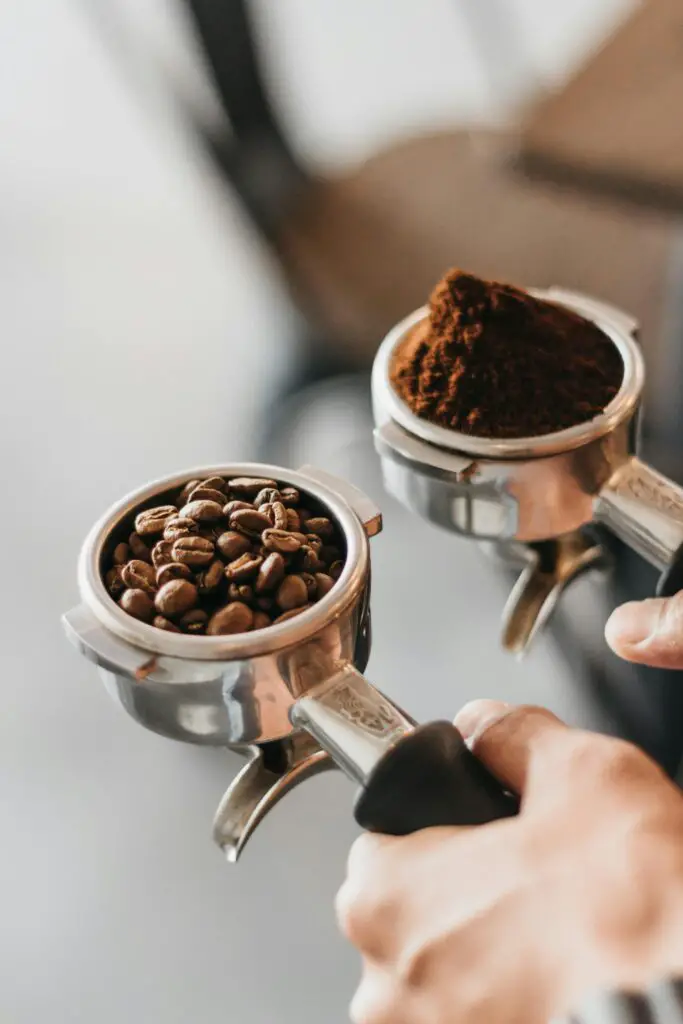
Achieving the perfect cappuccino at home requires attention to detail, from selecting the right beans to mastering frothing techniques.
Here are some essential tips to ensure your cappuccino turns out perfect.
Choosing the Right Coffee Beans
The foundation of a great cappuccino is the espresso, and that starts with choosing the right beans.
Always opt for espresso beans, which are roasted specifically for making strong, concentrated coffee.
Espresso beans are darker roasts, providing a rich, bold flavor that pairs well with milk.
Lighter roasts are not recommended for cappuccinos as they can taste too acidic and lack the depth needed to balance the milk and foam.
The roast level is critical.
A dark roast will give you the robust flavor typical of a classic cappuccino.
If you prefer a slightly less intense taste, a medium-dark roast can also work well.
Frothing Techniques
If you don’t have an espresso machine with a steam wand, you can still achieve great milk froth with alternative tools.
Here’s how to froth milk without an espresso machine:
- Using a French Press: Pour warm milk into your French press and pump the plunger vigorously for about 30 seconds.
- Handheld Milk Frother: Heat your milk first, then use a handheld frother to whip it into a foam. This is an easy and effective method, especially for small quantities.
- Whisk Method: If you don’t have any other tools, you can use a whisk. Heat the milk and whisk it rapidly by hand until it becomes frothy. This method takes a bit longer and produces slightly larger bubbles, but it still works in a pinch.
The key to good froth is using cold milk and warming it to around 150°F before frothing.
Always aim for microfoam, which is a smooth, velvety texture with small bubbles.
Serving Suggestions
Presentation can make a cappuccino feel extra special.
After frothing the milk and pouring it over the espresso, consider adding some simple toppings:
- Cocoa Powder: A light dusting of cocoa powder gives the cappuccino a rich, chocolatey aroma.
- Cinnamon: For a spiced touch, sprinkle cinnamon on top. It pairs well with the espresso’s bold flavor.
- Syrup Drizzle: If you like flavored cappuccinos, a drizzle of caramel or vanilla syrup over the foam adds a bit of sweetness and enhances the drink’s visual appeal.
Equipment You’ll Need
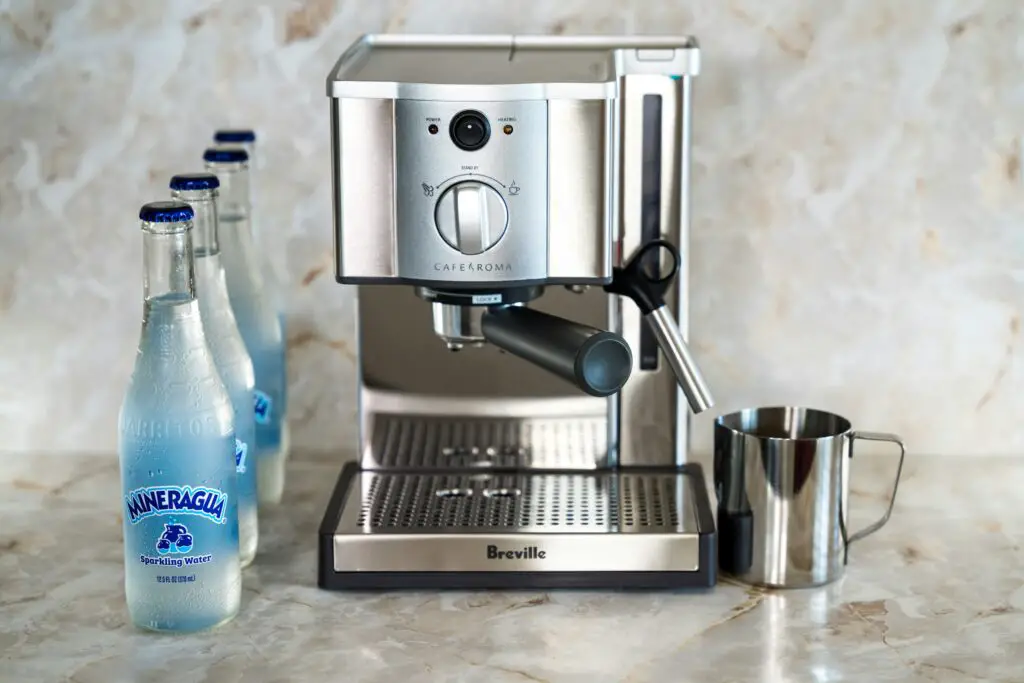
To make a perfect cappuccino at home, having the right equipment is essential.
While you can adapt with simple tools, certain equipment will give you the best results in terms of espresso quality and milk frothing.
Espresso Machines
An espresso machine is a key investment if you want to make high-quality cappuccinos.
There are various types of machines, each with its own pros and cons:
Manual Espresso Machines
These machines allow you full control over the brewing process.
You manually press the lever to extract the espresso, which can produce a rich, high-quality shot.
However, they require more skill and time, making them better suited for experienced users who enjoy the brewing process.
Semi-Automatic Machines
These are the most common type of home espresso machines.
They automate some steps, like controlling water temperature, while still giving you control over the timing of the extraction.
Semi-automatic machines are versatile and give consistent results, making them a popular choice for coffee enthusiasts.
Fully Automatic Machines
These machines do everything for you—grind the coffee, measure the shot, and pull the espresso with just the push of a button.
They’re convenient but don’t allow for much customization.
If convenience is your top priority, a fully automatic machine is a good choice.
Pod or Capsule Machines
These are the simplest espresso machines to use.
They require minimal setup and are mess-free, but the downside is limited control over the coffee flavor and quality.
These machines are ideal if you want speed and simplicity without focusing on barista-level results.
Milk Frothers
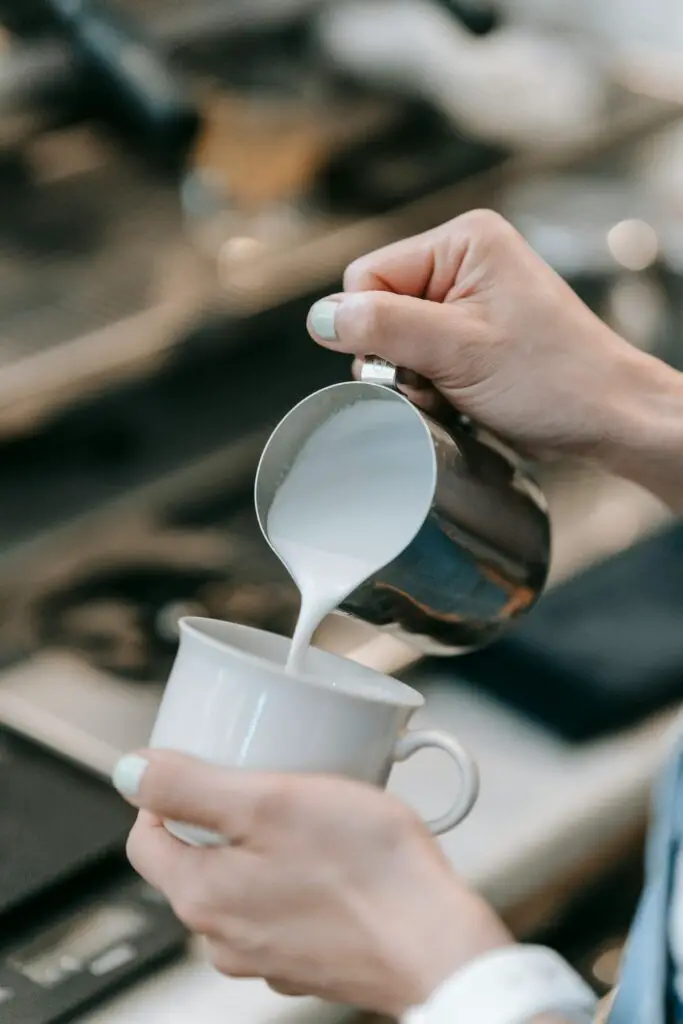
Milk frothing is an essential part of making a cappuccino, and you don’t always need a fancy steam wand to get great results.
Here are some common tools for frothing milk:
Handheld Milk Frothers
These small, battery-powered devices are easy to use and portable.
They work by spinning a tiny whisk that froths the milk.
Handheld frothers are affordable and perfect for quick frothing, but they may not create foam as dense or smooth as steamers.
Steam Wands (on Espresso Machines)
If you have an espresso machine with a built-in steam wand, this is the best tool for frothing milk.
Steam wands produce smooth microfoam, ideal for cappuccinos.
The downside is that they require some practice to use correctly, but once mastered, they yield the best results.
French Press
As we briefly touched on earlier, a French press can double as a frother.
After warming the milk, you can use the plunger to pump the milk and create foam.
This method is inexpensive and effective, though it produces slightly larger bubbles compared to other methods.
Frothing Pitchers
Whether using a steam wand or handheld frother, having a metal frothing pitcher helps with both heating and pouring the milk.
The spout is designed for precision when pouring foam, which is essential for creating a smooth finish.
Healthier Cappuccino Options
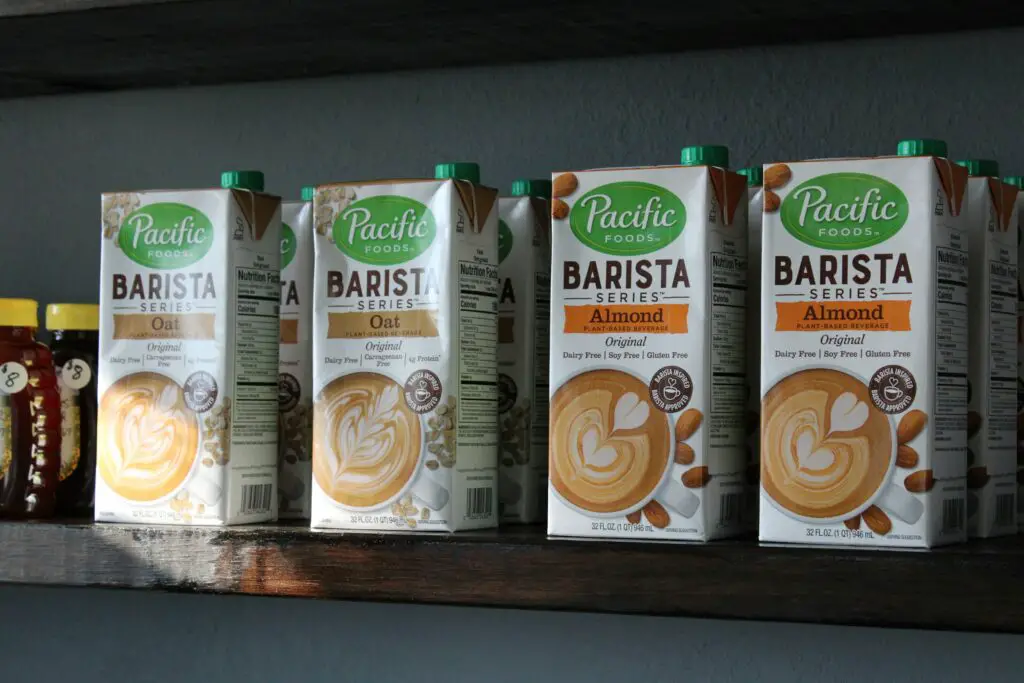
For those looking to enjoy a cappuccino without the extra calories or caffeine, there are a few simple adjustments you can make to create a healthier version.
One popular low-calorie alternative is using almond milk instead of whole milk.
Almond milk has fewer calories and a lighter texture, while still frothing well enough for a cappuccino.
You can also reduce or eliminate added sugars to cut down on calories—many flavored syrups can be replaced with natural sweeteners like stevia or simply left out.
Another option is switching to decaf espresso, which allows you to enjoy the full flavor of a cappuccino without the stimulating effects of caffeine.
Decaf cappuccinos are perfect for those who are sensitive to caffeine or who want to enjoy their favorite coffee drink later in the day without affecting their sleep.
Conclusion
Now that know 16 different ways to enjoy a cappuccino, it’s time to get creative in your own kitchen.
Try out these recipes and feel free to experiment with flavors and ingredients to make them your own.
Don’t be afraid to add your own twists—whether it’s a new topping, a different milk, or a fun flavor combination.
And if you have a favorite cappuccino recipe or unique variation, we’d love to hear about it.
Share your creations and inspire others to enjoy this timeless coffee drink in new ways!


